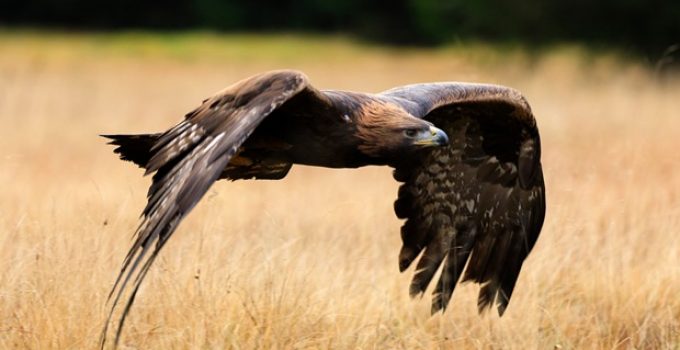Can Eagles See in Color?
Yes, eagles can see in color—and much more vividly than humans. Their vision is among the sharpest in the animal kingdom, with color detection that extends into the ultraviolet (UV) range. This advanced color perception helps them detect prey, navigate landscapes, and recognize mates or rivals from great distances.
Dive Deeper
- How Sharp Is an Eagle’s Vision?
- Can Eagles See More Colors Than Humans?
- Why Do Eagles Need Color Vision?
- How Does Eagle Vision Compare to Ours?
- 🎯 Final Thoughts
- 📚 References
🔍 How Sharp Is an Eagle’s Vision?
Eagles are legendary for their eyesight. Their large eyes, which take up a significant portion of their skull, are adapted for:
- Long-distance focusing
- Exceptional detail resolution
- Precision tracking of movement
| 🦅 Statistic: An eagle’s eyesight is estimated to be 4 to 5 times sharper than a human’s, allowing it to spot a rabbit from over 2 miles away [1].
This acuity is made possible by:
- A deep fovea (the area of sharpest vision)
- A high density of cone cells for detecting light and color
- The ability to move each eye independently for a wide field of view
🌈 Can Eagles See More Colors Than Humans?
Yes. Eagles are tetrachromatic, meaning they have four types of cone photoreceptors, compared to the three found in human eyes. These cones allow them to:
- See the full range of visible light
- Detect ultraviolet (UV) light
- Perceive color contrasts invisible to humans
| 🌟 Interesting Fact: UV vision allows eagles to detect urine trails of small mammals, which reflect UV light—effectively highlighting prey [2].
This ability gives them a massive advantage when hunting in open fields, forests, or even snowy terrain.
🧠 Why Do Eagles Need Color Vision?
Color vision enhances an eagle’s ability to:
- Spot camouflaged prey among vegetation
- Distinguish between healthy and diseased animals
- Recognize mate-specific plumage or warning signals from rivals
- Navigate complex landscapes by identifying color cues (like water or terrain differences)
| 📈 Statistic: Studies show that predatory birds with UV sensitivity have 30% higher success rates in capturing small mammals than those without [3].
This evolutionary advantage increases their hunting efficiency and reproductive success.
📊 How Does Eagle Vision Compare to Ours?
| Vision Feature | Eagles | Humans |
|---|---|---|
| Visual acuity | 20/5 to 20/4 (can see from 5x farther) | 20/20 (normal) |
| Cone types (color vision) | 4 (tetrachromatic, includes UV) | 3 (trichromatic: red, green, blue) |
| Fovea structure | 2 foveae per eye (central and lateral vision) | 1 fovea per eye |
| Field of view | Up to 340° combined (binocular and monocular) | About 180° combined |
| UV light detection | Yes | No |
| 👁️ Fun Insight: Eagles not only see UV, but can also detect polarized light, which helps them perceive subtle differences in landscape texture and prey movement [4].
🎯 Final Thoughts
Can eagles see in color? Absolutely—and far beyond the range of human vision. Their tetrachromatic eyes allow them to detect ultraviolet light, spot prey miles away, and distinguish critical environmental details. This supercharged vision is a key component of their hunting strategy, survival, and reproduction. Understanding how eagles see the world offers a window into one of nature’s most extraordinary visual systems.
📚 References
- Reymond, L. (1985). “Spatial visual acuity of the eagle eye.” Vision Research, 25(10), 1477–1491. https://doi.org/10.1016/0042-6989(85)90226-3
- Lind, O., et al. (2013). “Ultraviolet sensitivity and color vision in birds of prey.” Journal of Experimental Biology, 216(9), 1651–1658. https://doi.org/10.1242/jeb.082495
- Viitala, J., et al. (1995). “Ultraviolet vision in birds: significance for prey detection.” Nature, 375(6527), 27–28. https://doi.org/10.1038/375027a0
- Potier, S., et al. (2016). “Visual capacities in raptors: the case of the Montagu’s harrier.” PLoS ONE, 11(10), e0164624. https://doi.org/10.1371/journal.pone.0164624
